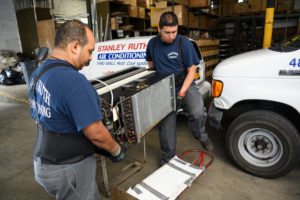
You can diagnose a leak by pulling your car from the garage. You can determine the source and color of the liquid by placing a piece of white cardboard underneath the car. The chart below will help you determine where the leak is most likely to be. To find out the exact type of fluid that is leaking, check your owner’s manual.
A leaky car is one of the most obvious signs
There are several signs that your car may have a leak. If you experience increased engine noise, it's worth checking the exhaust pipe. A small leak may be unnoticeable, but a large one could cause louder engine noises that echo throughout the vehicle. The noise may increase in volume during acceleration. If you hear this noise, your car is likely suffering from an exhaust leak. Also, a leak in an exhaust pipe could cause the emissions test to fail.
Common leak sources
Leakages in a vehicle are always an issue, especially if they occur during driving. Cars need a variety of fluids to operate properly, and these liquids can easily leak if they are not checked and fixed immediately. Here are some of the leading causes of car fluid leakage. Antifreeze is a common fluid that can leak from your vehicle. It can freeze in the engine and cause damage.
You can test drive your car to see if there is a leak.
You should test drive the car to make sure there is no leakage. It is crucial to test drive your car on a smooth, flat, long highway with minimal traffic. If possible, you should lean your car forward while keeping your wheels turned straightly. Listen out for any popping sounds or clunks coming from the vehicle. The vehicle could have a problem if the noise continues. If you are unsure, have your car professionally inspected. It is important to inspect the motor mounts, front-end, and CV joints.

Use a pressure tester to find a leak
A pressure tester can be used to find the source of a leak in your cooling system. This device uses air to pump coolant into the cooling system. A leak is indicated when the coolant expands. The pressure inside the system will rise as a result. Attach the tester on top of radiator to check for leaks. Once the gauge is at the correct pressure, pump the radiator until it stops. Ideal results are a pressure increase of two to three times the normal level and a decrease of about a half inch.
FAQ
What is the best career for an automotive mechanic?
For those who are passionate about excellence, automotive is a rewarding industry. This field requires hard work and the willingness to learn from others.
Excellent communication skills are essential as you will spend most of the time speaking to customers or other employees. It is important that you are willing to travel, work long hours and be able to commute.
You can take classes at universities and community colleges if you are interested in a career as an automotive technician. Many schools offer programs for students who are interested to learn about auto sales, customer service, or repair.
Studying mechanical engineering is an option if you're interested in pursuing a degree. It is possible to earn a bachelor’s degree in only four years.
In addition, many companies will hire graduates straight out of school. Therefore, it is a good idea to look for employment while still pursuing part-time studies.
After you complete your education, you may need to undergo some type of training before you can become an automotive technician.
This means that you will need to pass tests such as the Automotive Excellence (ASE) certification exam. This test covers topics such engine maintenance as brakes, steering, suspension, etc.
Once you've passed the ASE test, you can apply for a license issued by the National Institute for Automotive Service Excellence.
You can repair vehicles owned by private citizens with a license. You will be compensated based on how many services you performed.
Not all states require licensing. However, licensing is required for anyone who plans to work outside the home state.
Some states won't issue licenses until you have completed a certain amount training. If you are one of these people, you might need to look for another alternative.
Is it possible to work as an automotive mechanic?
Yes, it can be very easy. Many garages list their vacancies online. Many people simply apply for the fun of it. Applying for several positions and seeing if they accept student applications is a good way to get your foot into the door. Ask your friends and family to recommend anyone in the field. They may be happy to recommend someone.
To be a car mechanic, do you need a degree? Do I have to study part-time?
Although it's not mandatory, a degree can help. Most employers prefer candidates who have studied for a full degree rather than those who haven't. It shows that you've put the effort in and have done everything possible to succeed.
However, it doesn't mean you can't still work while studying. Some universities allow students the flexibility to finish coursework during summer vacations and resume their studies later in year. Other universities permit students to take classes part-time during the school year.
Statistics
- The U.S. Bureau of Labor Statistics (BLS) reports that the job outlook for automotive service technicians and mechanics is expected to decline by 4% from 2019 to 2029. (indeed.com)
- Apprentice mechanics earn significantly less hourly than mechanics who have completed training, with a median wage of approximately $14.50 an hour, according to PayScale. (jobhero.com)
- 52% of Mechanics in the United States think their salaries are enough for the cost of living in their area. (indeed.com)
External Links
How To
How to obtain a mechanic certificate
These certifications are for those who wish to be certified as automotive technicians. They cover all aspects of auto repairs including engine diagnostics. Electrical systems. Brakes, suspension. steering. Fuel injection. Air conditioning. Heating. Exhaust. Diagnostic tools. Body repairs. Collision damage repair. Paintless dent removal. Motor vehicle emissions testing.
The program consists of 12 hours of classroom instruction and three months of on-the-job training at a participating dealership. Students must take a minimum 60-hour semester of classroom instruction. Additionally, students must pass a written examination that includes both theory and practical questions. After completing the coursework students are eligible to take the National Institute for Automotive Service Excellence state examination (ASE). For employment as an automotive technician, certification by ASE is necessary.